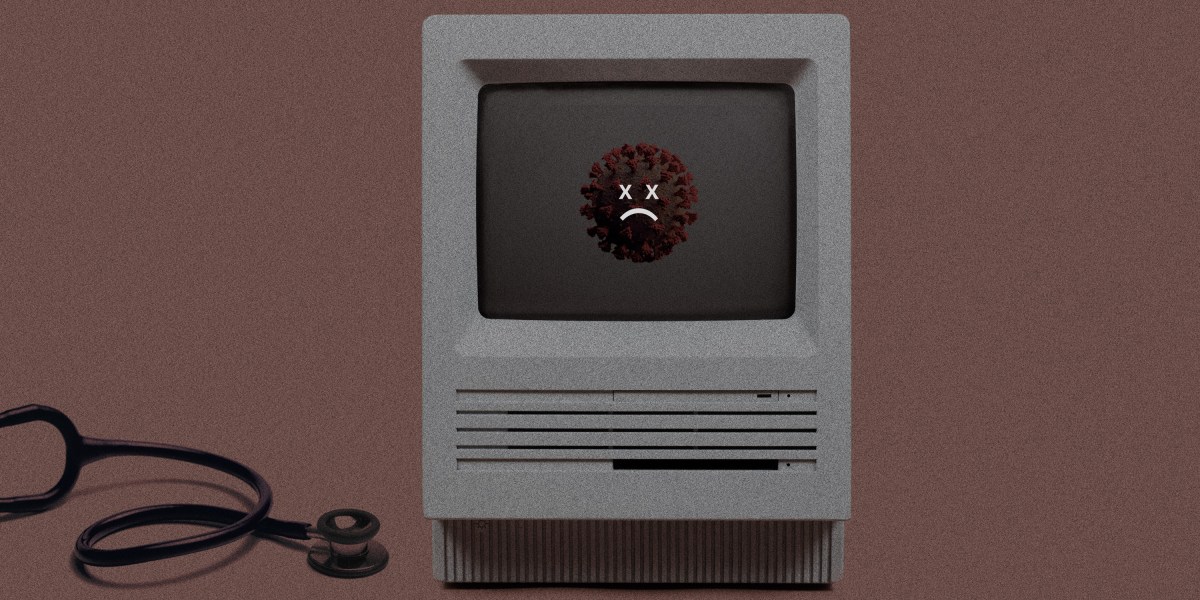What went wrong with America’s $44 million vaccine data system?

Pang says he spent three weeks trying to sign into VAMS, but he constantly ended up in the dashboard for patients instead of clinic administrators. In the meantime, his staff was vaccinating hundreds of people a day and keeping track of their information on paper forms. The college set up a bank of volunteers to sit in a room and copy all the information into VAMS.
Eventually, the local hospital helped him get signed into the system. The clinic used it for three days. On the last day, 20 new volunteers came in ready to work. But they’d already signed into VAMS to get their mandatory shots, and there was no way to switch them from patient accounts to staff ones.
The next day, they went back to paper.
“A good system is easier to use than it is not to use. If people are writing this on paper, there’s something wrong,” says Stone. “How are you going to do 100 million shots in 100 days and have someone enter it all in by hand?”
“There is zero way it’ll happen without help”
“VAMS is fussy. There’s days when VAMS works, and days when VAMS doesn’t work,” says Courtney Rowe, a pediatric urologist at Connecticut Children’s Medical Center, who has been volunteering to monitor people for reactions after their shots. She takes it as an opportunity to help people get set up for their second appointments. “I basically function as tech support,” she says.
Online sign-ups are especially challenging for older people, perhaps the worst group to beta-test a new system. Many seniors probably lost their internet access when libraries and senior centers closed; only 59% have broadband connections at home, according to a 2019 Pew survey. While many states offer phone lines for making appointments, people around the country have complained about endless waits.
“There’s days when VAMS works, and days when VAMS doesn’t work.”
“It won’t work on Internet Explorer; it only works in Chrome. The ‘Next’ button is all the way down and to the right, so if you’re on a cell phone, you literally can’t see it,” says Rowe. “In the first round, people using VAMS mostly had advanced degrees. If you’re 75 and someone asks you to log into VAMS, there is zero way it’ll happen without help.”
After I spoke with Rowe, Connecticut opened up vaccinations to anyone over 70. Her prediction came true immediately. On the first day of a new vaccination clinic in Vernon, Connecticut, 204 vaccines were ready but only 52 seniors had made appointments in VAMS.
“Our residents, and those from around the state that we’re serving at this clinic, are frustrated, angry, and confused by the ineffectiveness of this registration system,” town administrator Michael Purcaro said at a press conference.
Elderly people aren’t the only ones who will struggle if vaccination requires online sign-up. Language barriers will become a significant problem, especially for non-native English speakers doing high-risk essential work. People in rural or poor urban areas often have limited access to the internet in the first place, a problem disproportionately affecting the same Black and Latino communities that have suffered the worst traumas of the pandemic.
“There are some real equity concerns,” says Stone. “What happens when you go to a city and 20% of the population can’t get the notices?”
So what went wrong? In an email, a CDC spokesperson defended the system and said that appointments are not randomly canceled, despite what many clinicians have claimed: the problem, she said, was user error. She also outlined several fixes that have been made in response to feedback. VAMS now includes warnings when administrators do something that might change patient appointments, for example.
